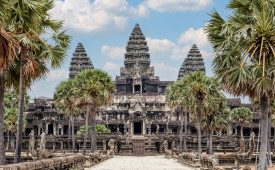-
Latin America
Latin America
- Countries (hidden space)
- Galapagos & Ecuador
- Guatemala
- Mexico
- Panama
- Peru
- Popular Attractions
- Machu Picchu
- Inca Trail
- Easter Island
- Galapagos Islands
- Patagonia
- Rio de Janeiro
- Iguazu Falls
-
Africa
Africa
- Spacer Africa
- South Africa
- Zimbabwe
- Popular Attractions
- Cape Town
- Okavango Delta
- Sossusvlei Dunes
- Victoria Falls
- The Kruger
- The Garden Route
- Masai Mara
-
Asia
Asia
- Spacer Asia
- Laos
- Sri Lanka
- Uzbekistan
- Vietnam
- Popular Attractions
- Taj Mahal
- Lion Rock (Sigiriya)
- Angkor Wat
- Ha Long Bay
- Kyoto
- Europe & Middle East
-
Destinations
- Latin America
- Argentina
- Bolivia
- Brazil
- Chile
- Colombia
- Costa Rica
- Galapagos & Ecuador
- Guatemala
- Mexico
- Panama
- Peru
- Asia
- Cambodia
- India
- Japan
- Laos
- Sri Lanka
- Uzbekistan
- Vietnam
- Middle East
- Jordan
- Southern & East Africa
- Botswana
- Kenya
- Namibia
- South Africa
- Zimbabwe
- Europe
- Slovenia
- All Holiday Destinations
- Contact Us
-
About
About
Llama Travel provides high quality holidays at the lowest possible prices.
99% recommend us Lower prices - guaranteed Financially protected by ATOL
Cambodia is home to one of the world’s greatest man-made structures. The temple complex of Angkor Wat is the largest in the world and its ornate spires and intricate reliefs tell stories of ancient kings and mythical deities. The temple complex was started by King Suryavarman II, ruler of the Khmer empire, which was the dominant civilisation in Southeast Asia from the 9th to the 15th century. From the 15th century onwards, the Khmer empire went into its own dark ages, and the Angkor temples were abandoned. For the next 400 years, Cambodia experienced a steady decline in power which historians still struggle to explain. In the 19th century, Cambodia was colonised by France and became part of French Indochina. After gaining independence from France in 1953, it was less than two decades before the country was plunged into the horrors of civil war. The 21st century has been somewhat kinder to Cambodia. The temple complex of Angkor evokes a strong sense national pride for many Cambodians, harking back to a golden age of Khmer dominance.

